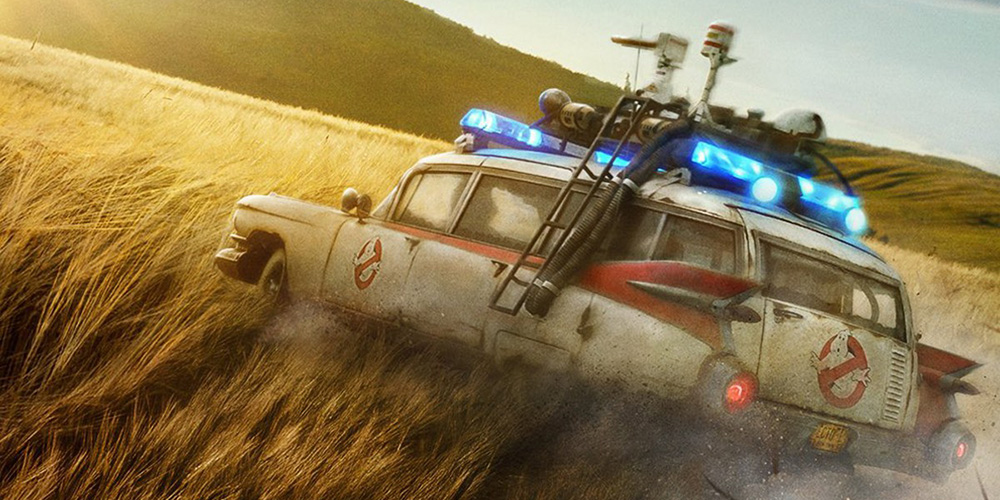The first long trailer for the Ghostbusters reboot, Ghostbusters: Afterlife dropped recently and I have to admit it checks a lot of boxes. The problem is, that checklist was written by a focus group tested, corporate cinema think tank somewhere in Hollywood. I honestly can’t blame them. The reason this checklist even exists is because it clearly works.
- The aesthetic needs to be a cross between the new Transformers movies and Armageddon. I’m not sure what the technical language is for it, but there’s something about the way movies like this are shot, the camera angles, the color palette, the feel, that has a Bay-Bruckheimer 90s feel to it.
- Callbacks to when the Millennials and Gen Xers watched the thing as kids. In this case, the Ecto-1! Proton packs! Slimer! Ghost traps! It’s everything you loved as a kid!
- Make the main cast a bunch of younger people though to draw in the next generation. In this case, the Stranger Things actor Finn Wolfhard, and a handful of other teens and pre-teens to make sure Gen Y is not just invested but gets fully sucked in for the next handful of movies.
- Subpoint—Make it a bit of a fish out of water story where the kid has to move to a new town and doesn’t fit in, but then something special happens to him and he has to solve a mystery or defeat something in a way that gets him to bond with someone in town, possibly a love interest.
- Subpoint—Make this new generation discover everything you discovered when you were a kid again for the very first time. This way it’ll be like you’re discovering it all over again, and the next generation is doing it with you.
- Cameos! They weren’t in the trailer here, but you know they’re coming.
- If possible, set it in the 80s.
That last one seems to be a more recent addition, as for some reason movies and shows set in the 80s are having a renaissance, but other than that, the new Ghostbusters checks all the boxes. This is basically the same checklist that was applied to Bumblebee and other recent movies aimed more towards a younger crowd, like the recent Power Rangers reboot as well. A similar checklist applied to movies like 2011’s Super 8 a spiritual reboot of every 80s kids’ movie ever), and other films aimed toward older crowds, like the reboots of the Star Wars and Star Trek franchises (and basically half of all major studios’ films being made now) also aim squarely at pillaging what was for emotional, ephemeral power to juice a movie devoid of originality. Exceptions to the rule, like the creative Jumanji sequel, are few and far between. JJ Abrams is the chief pirate of this particular form of 80s and 90s thievery, but many other directors actively sail the seas of cinema history raiding and plundering its treasures.
And so here we have a new Ghostbusters movie following the formula. You’ll notice the 2016 reboot fairly pointedly did not follow the formula. They tried something different in that one, as a straight reboot rather than sequel, gender flipping the cast, going for campy humor over the modern trend to make things darker and more serious, and add a human villain. It flopped – hard – at the box office. You can blame the gender-based controversy surrounding the film if you want, but I think the problem the studio pulled from it wasn’t so much gender as a failure to check the boxes. In this attempt, they wiped the 2016 reboot from the canon and started over as a direct sequel.
I know I’ve spent a lot of time grousing about how annoying it is that basically every one of these kinds of movies is essentially the exact same structure with a classic movie overlay thrown on top. But the thing is, it works. I keep going to see them along with everyone else, and I thought Bumblebee, while not a stellar movie, was one of the better of the overwrought, off-the-rails series of Transformers movies. And you know what? Ghostbusters: Afterlife looks like a lot of fun too.
I’m looking forward to the cameos and the callbacks and the winky jokes. I just cross my fingers and hope they keep the cringey stuff to a minimum and at least try to forge some new territory with this. A good reboot-sequel should carry with it just enough nostalgia to feel the past, but enough creativity and imagination to seed the future.








